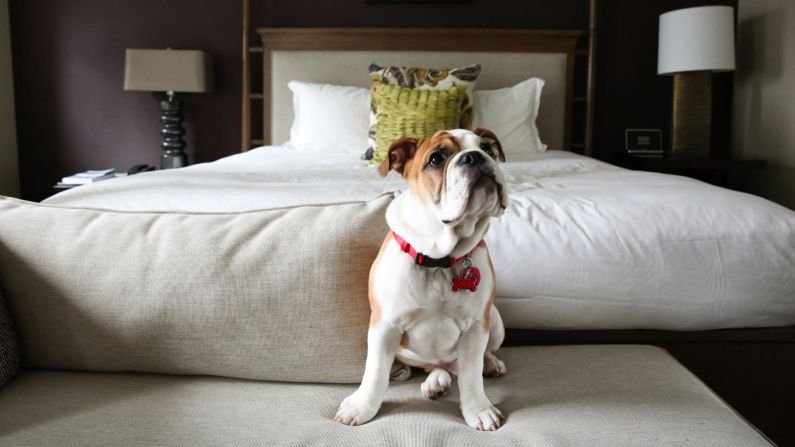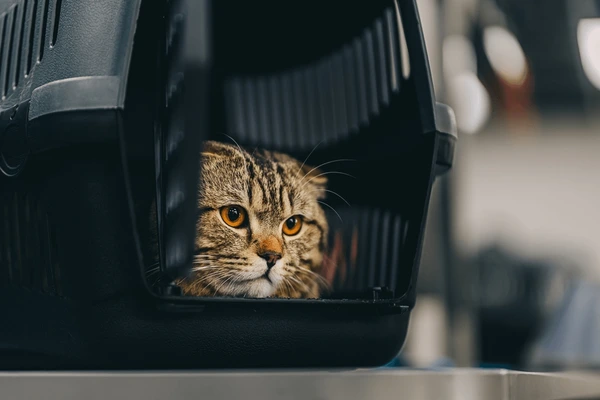
Introduction
Traveling with your pet can be one of life’s greatest joys—but if not planned properly, it can also be stressful for both you and your furry companion. Whether you’re off on a weekend road trip, flying across the country, or going on a pet-friendly vacation, careful preparation ensures a safe, comfortable, and enjoyable journey.
In this guide, we’ll cover everything from travel preparations and modes of transport to in-transit comfort and pet health. By following these tips, you’ll be ready to create fun, stress-free travel experiences for your beloved pets.
1. Preparing Ahead of Time
A. Visit the Veterinarian
Ensure your pet has:
- A health check-up within 30 days of travel.
- Up-to-date vaccinations and health certificates (often required for airlines or border crossings).
- Microchip and vaccine record verification.
- Identification tags with your current contact information.
B. Practice Travel Readiness
- Acclimate your pet: Have short practice rides or crate drills to build comfort.
- Crate training: Introduce the travel carrier gradually—start at home before hitting the road.
- Desensitization: Associate the crate with treats and play, not anxiety.
C. Pack a Travel Kit
Include:
- Food and water (plus collapsible bowls)
- Extra leashes and harnesses
- Waste bags, paper towels, and pet wipes
- Medication and health records
- Comfort items (blankets, favorite toys, calming aids)

2. Choosing the Right Mode of Travel
A. Car Travel
Tips for Comfort and Safety:
- Use a secure harness or crate strapped in with a seat belt.
- Keep the temperature comfortable and use window shades.
- Provide regular bathroom and stretch breaks every 2–3 hours.
- Never leave your pet unattended in a closed vehicle.
Essential Stops:
- Look for pet-friendly rest areas.
- Use pet relief zones or grassy spots at service stations.
B. Air Travel
Overview of Options:
- Cabin travel: Small dogs and cats allowed under seat; requires IATA-approved carrier.
- Checked baggage or cargo: Larger pets; ensure climate-controlled and safe crates.
- Infrequent cargo travel: Highest risk; avoid if possible by choosing direct flights during temperate months.
Preparation Steps:
- Reserve spots in advance—airlines limit numbers.
- Obtain a health certificate no more than 10 days before departure.
- Use an airtight, well-ventilated crate meeting regulatory standards.
- Label the crate with “Live Animal,” name, and contact info.
C. Train, Bus & Other Public Transportation
- Check pet policies for each provider.
- Use approved carriers or crates.
- Bring treats and calming aids.
- Reserve pet-friendly accommodations in advance.
3. Comfort and Enrichment During Travel
A. Bedding & Familiar Items
Place your pet in a comfortable carrier lined with bedding from home for familiarity and comfort.
B. Feed and Hydration Routine
Feed your pet a small meal 3–4 hours before departure. Provide water during stops but limit intake to avoid motion sickness.
C. Toys and Chews
Include a couple of favorite chew toys or stuffed Kongs to occupy long travel intervals.
D. Anxiety Reduction
Use:
- Calming pheromone sprays.
- Soothing music playlists for pets.
- Gentle massage or gentle talk to ease nerves.

4. Safety Tips on the Road
A. Secure Car Travel
- Always use seat belt harnesses or secure crates.
- Keep pets in the back seat to avoid airbag injuries.
- Use shades and maintain proper airflow.
B. Preventing Travel Sickness
- Consult your vet for anti-nausea medications or supplements.
- Focus on low-prep meals and breakthrough treats instead of full meals.
C. Emergency Preparedness
- Locate nearest veterinary clinics along your route and save emergency numbers.
- Carry a simple first-aid kit with gauze, antiseptic wipes, and bandages.
5. Hotel and Accommodation Tips
A. Choosing Pet-Friendly Lodging
Call ahead to confirm pet policies, fees, and restrictions. Use apps like BringFido or Hairpin to find suitable stays.
B. In-Room Guidelines
- Use baby gates if pets roam freely.
- Rely on toys and comfortable bedding to reduce anxiety.
- Keep pets away from fire alarms and noise sources at night.
C. Exploring the Area
Find nearby parks, pet-friendly trails, or green spaces. Bring your own poop bags and follow leash rules.

6. Flying with Pets: Expert Guidelines
- Reserve early—many airlines limit pets per flight.
- Require documentation: microchip, rabies certificate, and health checks.
- Crate expectations: Sturdy, ventilated, with no gaps or loose parts.
- Pre-flight routine: 3–4 hours before departure empty the bladder and offer water.
- Label well: “Live Animal” stickers on all sides with your contact info.
- Arrival care: Offer water, take a calm walk, and assess their well-being.
7. Transportation by Train or Bus
- Amtrak: Pets allowed in some routes; only small dogs and cats under 20 lbs.
- Bus lines: Check pet policies—they vary widely.
- Local transit: Often allow small, contained animals.
Ensure:
- Pets are in well-ventilated soft-sided carriers.
- Leash and harness ready for station stops.
- Clean-up materials on hand for accidents.

8. Managing Border Crossings & International Travel
International pet travel includes:
- Health certificates abiding by destination country rules.
- Rabies-free certification and regional quarantines.
- Import permits and vaccinations accepted.
Some countries require:
- Microchips, blood titer tests, or specified rabies vaccines.
- 30-day quarantine or vet exams at ports of entry.
Plan months ahead and consult official sources and airlines.
9. Traveling with Exotic Pets
Special needs for reptiles, birds, and small mammals:
- Birds: In-cabin travel in ventilated carriers; pre-trip prep for perch comfort.
- Reptiles: Maintain heater pads in winter and provide humidity control.
- Small mammals: Temperature-safe carriers with bedding.
Verify exotic pet policies with transport providers well in advance.
10. Returning Home: Recovery and Reintegration
- Unpack and create a calm environment for your pet to decompress.
- Maintain normal routines and reset sleep schedules.
- Monitor for signs of illness or stress (vomiting, lethargy, appetite loss).
- Clean or launder everything—crate, bedding, travel bowls.
- Re-establish exercise and stimulation routines gradually.

Conclusion
Traveling with your pet shouldn’t be a source of stress—it can be a valued bonding experience full of wonderful memories. Thoughtful preparation, the right equipment, and patience make journeys smoother for both you and your furry companions.
Remember, each pet is unique. Customize these tips based on their personality, breed, and age. With careful planning, you’ll create stress-free travel experiences and make PetPatch proud.

Ready to Travel?
- Checklist downloadable # let’s create packable PDF checklists
- Social sharing snippet: “Your stress-free pet travel starts here!”
- Explore more guides: “Packing for Pets,” “Pet Travel Health FAQs,” “Best Pet Travel Gear”

